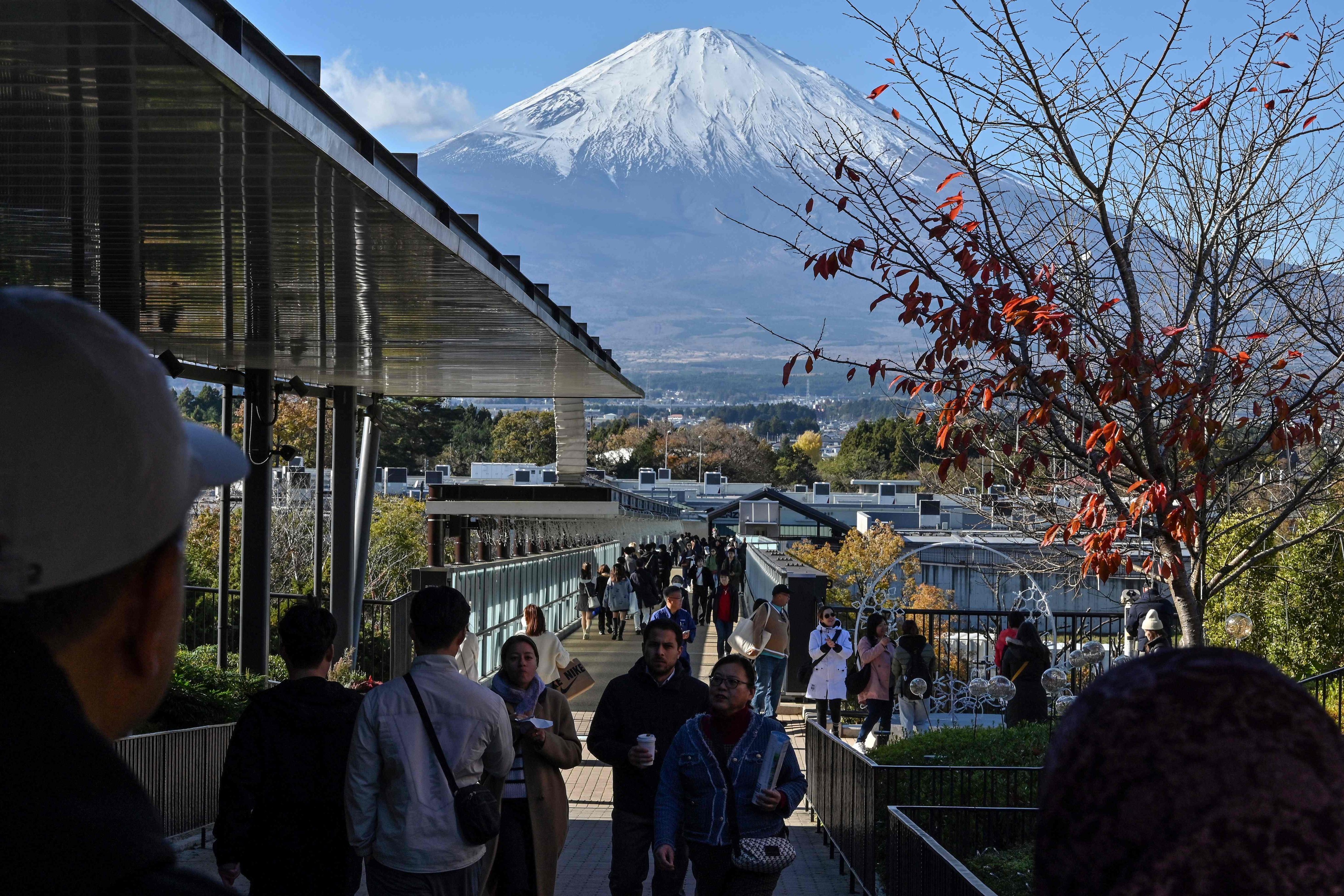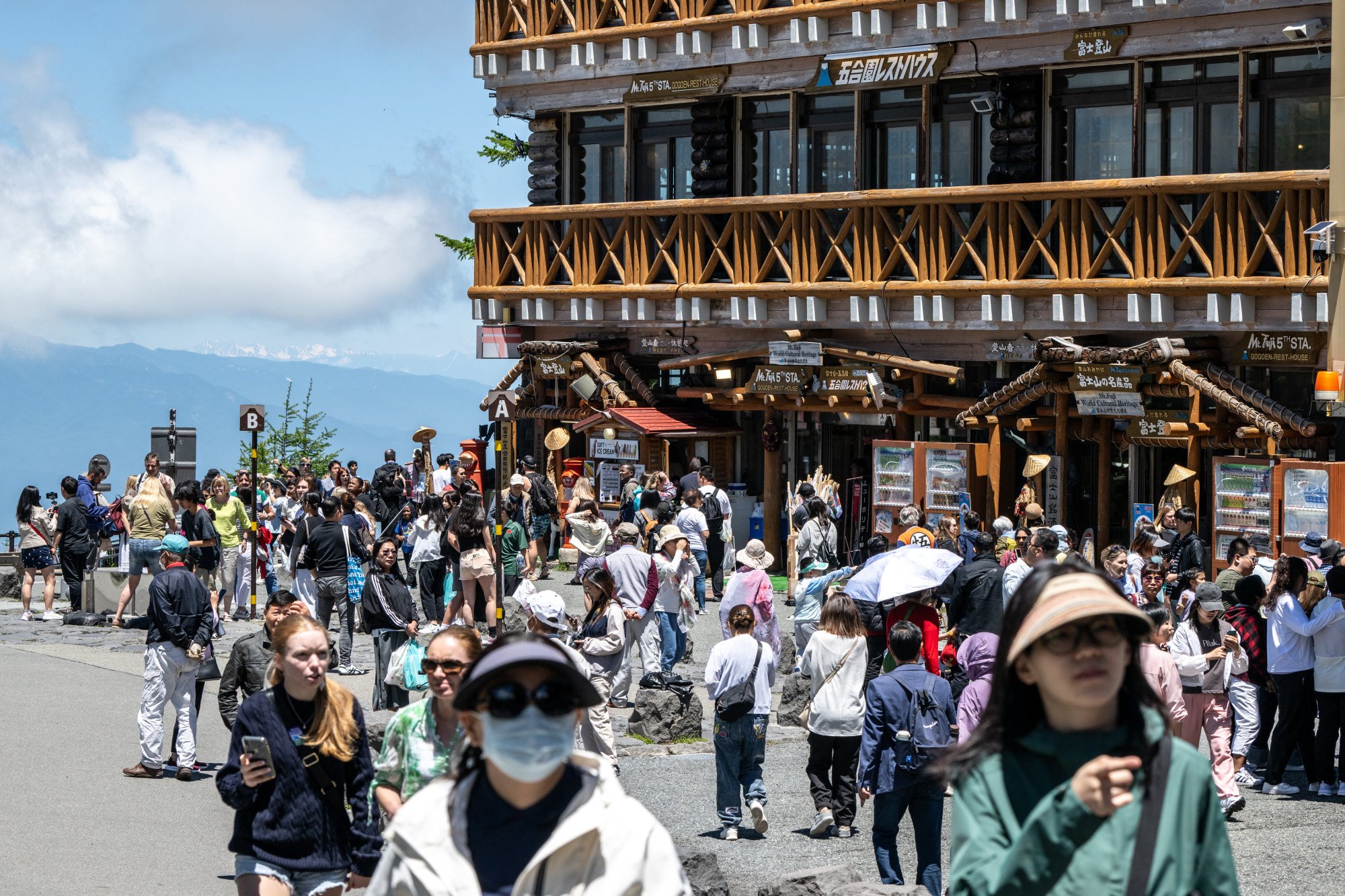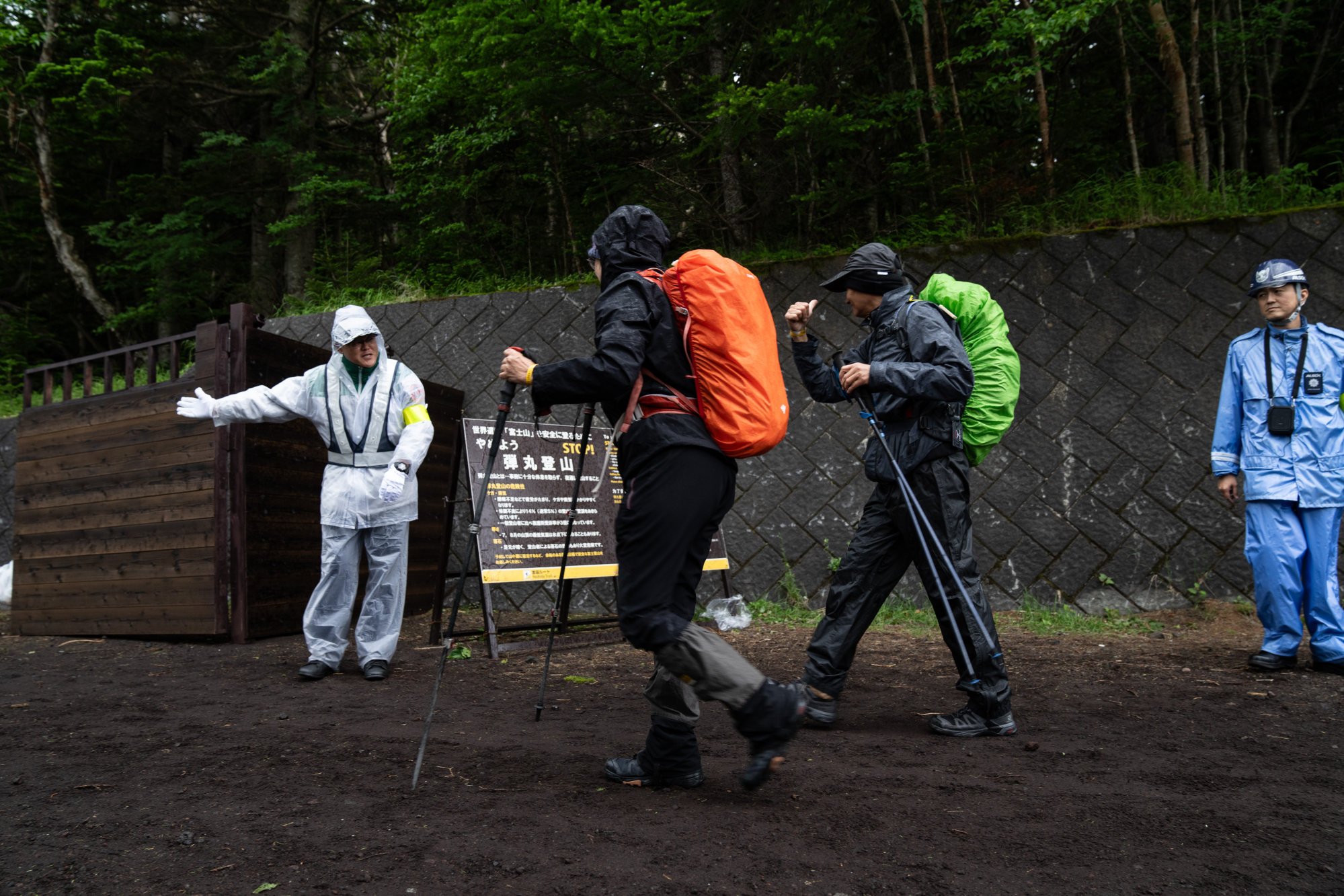2 Americans rescued from Japan’s Mount Fuji prompt more calls for tougher rules
The recurrence of such incidents on the peak has renewed calls in Japan for stiffer penalties and for errant hikers to pay for their rescue

Two Americans have had to be rescued from Japan’s Mount Fuji in separate incidents before the official climbing season began on Thursday, prompting renewed calls for tougher penalties on rule-breaking hikers who endanger themselves and drain local resources.
The deployment of Shizuoka prefecture’s mountain rescue teams twice in two days to rescue the pair has again triggered criticism of people who insist on trying to ascend the 3,776-metre peak outside the season without adequate preparation and equipment.
While the two rescues on July 4 and July 5 did not require the use of helicopters, there are growing calls for anyone who has to be rescued from Mount Fuji to foot the bill of each recovery operation.
“The three routes to the top of Mount Fuji that are in Shizuoka prefecture opened today, but we have had reports of hikers recovered earlier this month,” said Aya Ichikawa, an official of the tourism division of Fuji city, which is tasked with monitoring hiking on the Shizuoka side of the mountain.
“This is a problem because it is outside the climbing season, but there is no punishment for those who do not follow the rules. All we want is for people to follow the rules to make sure they are safe,” she told This Week in Asia.
The 67-year-old American who was rescued on the Fujinomiya trail on July 4 has not been named, although it was revealed he had pitched a tent near the seventh station on the mountain. He was feeling unwell and asked other hikers for help, with one calling the emergency services, according to a report by Shizuoka Broadcasting.
The man was transported on a tractor to the fifth station, where the road terminates, and handed over to the police and ambulance service. The TV report said that while he was wearing warm clothing, he only had sandals on his feet and appeared to be suffering from hypothermia. He told the police it was his third time climbing Mount Fuji.

At around 8pm the following day, prefectural police received a call telling them that a 59-year-old American woman was lost in the dark on the mountain and needed to be rescued. The woman, who was also not named, climbed the peak earlier in the day but became disoriented during her descent.
The rescue team was able to locate the woman and escort her to the trailhead at the fifth station.
Shizuoka prefecture has introduced a number of measures designed to limit access to the mountain and reduce congestion and the likelihood of accidents, Ichikawa said.
All hikers are required to register in advance before each climb of Mount Fuji and pay a fee of 4,000 yen (US$27).
Large gates have been installed at the start of the Fujinomiya trail to make sure that hikers have the correct permits, while park rangers are also on hand to ensure that hikers have the appropriate equipment. Authorities have said they will turn back anyone who does not have the appropriate footwear or cold-weather equipment.
Unhandled type: inline-plus-widget {“type”:”inline-plus-widget”}
Hikers are also required to book a stay in one of the huts located along the trail as authorities attempt to stamp out the problem of “bullet climbing”, or ascending quickly without a stop to acclimatise to the altitude.
Nonetheless, the latest rescues showed that the restrictions could be circumvented, Ichikawa admitted. And that has provoked renewed calls for anyone who needs to be rescued to cover the costs.
In April, a Chinese university student who was rescued from Mount Fuji twice within four days – with his second attempted ascent prompted by his desire to recover a phone – also triggered widespread ridicule and anger in Japan.

“People should have to sign a consent form saying they will cover the cost of rescue, if necessary,” said one message on the Shizuoka Broadcasting site.
“It’s not just about the strain on local financial resources but also to educate people that they have to take responsibility. If people truly understood that their lives were in danger, they would not climb in sandals and T-shirts,” according to the message.
Another added: “People will continue to act with overconfidence and a complacent attitude because they know they will be rescued for free. If something happens to them, I think there should be severe penalties. I want them to think seriously about the lives of the people who have to go to rescue them.”
Ichikawa said the issue was being discussed in local communities around the mountain tasked to carry out rescues, with the city council in neighbouring Fujinomiya city due to discuss requiring affected hikers to cover rescue costs and any medical treatment.
There were at least 10 fatalities on Mount Fuji during last year’s climbing season, which ends on September 10 each year, with most succumbing to altitude sickness, heart problems or falls. There were more deaths outside the official season, according to local police.
An estimated 204,000 people climbed Japan’s most famous mountain last summer. This number could fall this year due to the hiking fee, advance registration rule and a cap on the number of daily climbers on the popular Yoshida trail in Yamanashi prefecture to 4,000 per day, Ichikawa said.